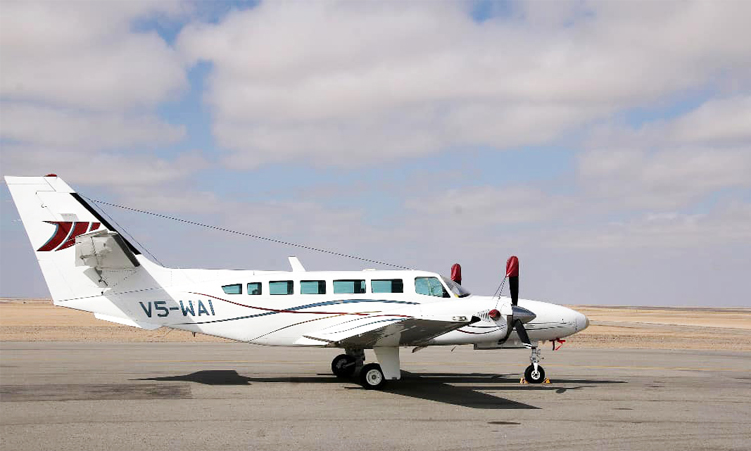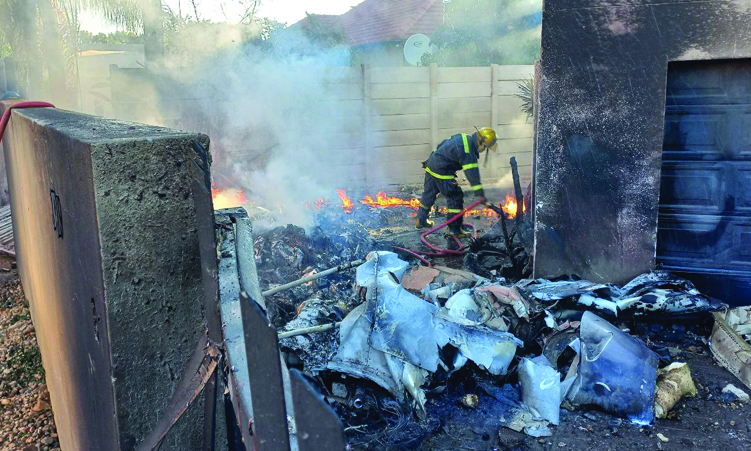The Cessna 406 aircraft, which crashed and claimed three lives in Windhoek’s Pionierspark earlier this month, seemed to have a malfunctioning left-hand side engine.

The plane’s right-hand side engine was replaced just before the accident, which took place during a post-maintenance flight.
This is according to a preliminary aircraft accident investigation report, which was released by the Directorate of Aircraft Accident and Incident Investigations yesterday.
The report was compiled by Ben Engelbrecht, the investigator in charge, and Hafeni Mweshixwa, a co-investigator. The aircraft, owned by Westair Aviation, claimed the lives of pilots Rozanne De Beer-Olivier (33) and Ruan van Schalkwyk (24), as well as aircraft engineer Andre-Armand Lubbe (25) on 3 May.
The report indicates that the aircraft was scheduled for a cargo flight to Johannesburg on the following day.
WHAT HAPPENED
The plane departed from Windhoek’s Eros Suburban Airport on 3 May for a post-maintenance test flight after its right-hand side engine was replaced.
“On board were two pilots and an engineer. The crew informed the air traffic controller (ATC) that they would like to do a test flight over the Goreangab Dam area at 8 000 feet above mean sea level. The ATC approved the request and cleared the aircraft for take-off,” the report reads.
The air traffic controller watched the departure closely, the report says, and noticed that before the plane crossed over the end of the runway it was leaning sharply to the left and then “rolled further to the left”.
According to the report, the air traffic controller then realised the aircraft was out of control and crashing.
He then pressed the crash alarm to alert the Airport Rescue and Fire Fighting Services, the report states.


After take-off a cloud of smoke was seen consistent with a malfunctioning left-hand side engine, it says.
“As soon as the smoke around the left engine was observed, the aircraft banked sharply to the left and crashed,” it reads.
Eyewitnesses who were close to where the aircraft crashed said they heard one of the engines making stuttering or back-firing sounds before it crashed.
The report further states that the impact then caused the aircraft to flip over sideways, breaking through two precast fences and a small wall.
“The impact also caused fuel to squirt from the left wing onto the street. One of the left propeller blades was thrown approximately 200m away and landed in another yard. As soon as the aircraft broke through the first precast fence it burst into flames,” the report says.
According to the investigators, the Airport Rescue and Fire Fighting Services were on site within seven minutes and quickly put out the raging fire.
“They were later joined by the City of Windhoek fire brigade, but sadly, all three occupants on board were fatally injured,” the investigators say. Three houses and five cars were damaged in the process, of which two caught fire, the report states.
LICENSED
According to the report, De Beer-Olivier had a valid Namibian commercial pilot’s licence, with 4450,4 hours’ flight exeprience, of which 2 448,1 hours were on the aircraft type at the time of the accident.
Co-pilot Van Schalkwyk also had a valid Namibian commercial pilot licence, with 345,4 hours’ flying experience, of which 72 hours were on the type of aircraft which crashed.
FLIGHT RECORDER
The report says the aircraft was not equipped with a flight data recorder or a cockpit voice recorder, since it was not required by regulations.
The plane was designed for passenger and small cargo transport, as well as civilian and military surveillance.
Stay informed with The Namibian – your source for credible journalism. Get in-depth reporting and opinions for
only N$85 a month. Invest in journalism, invest in democracy –
Subscribe Now!







